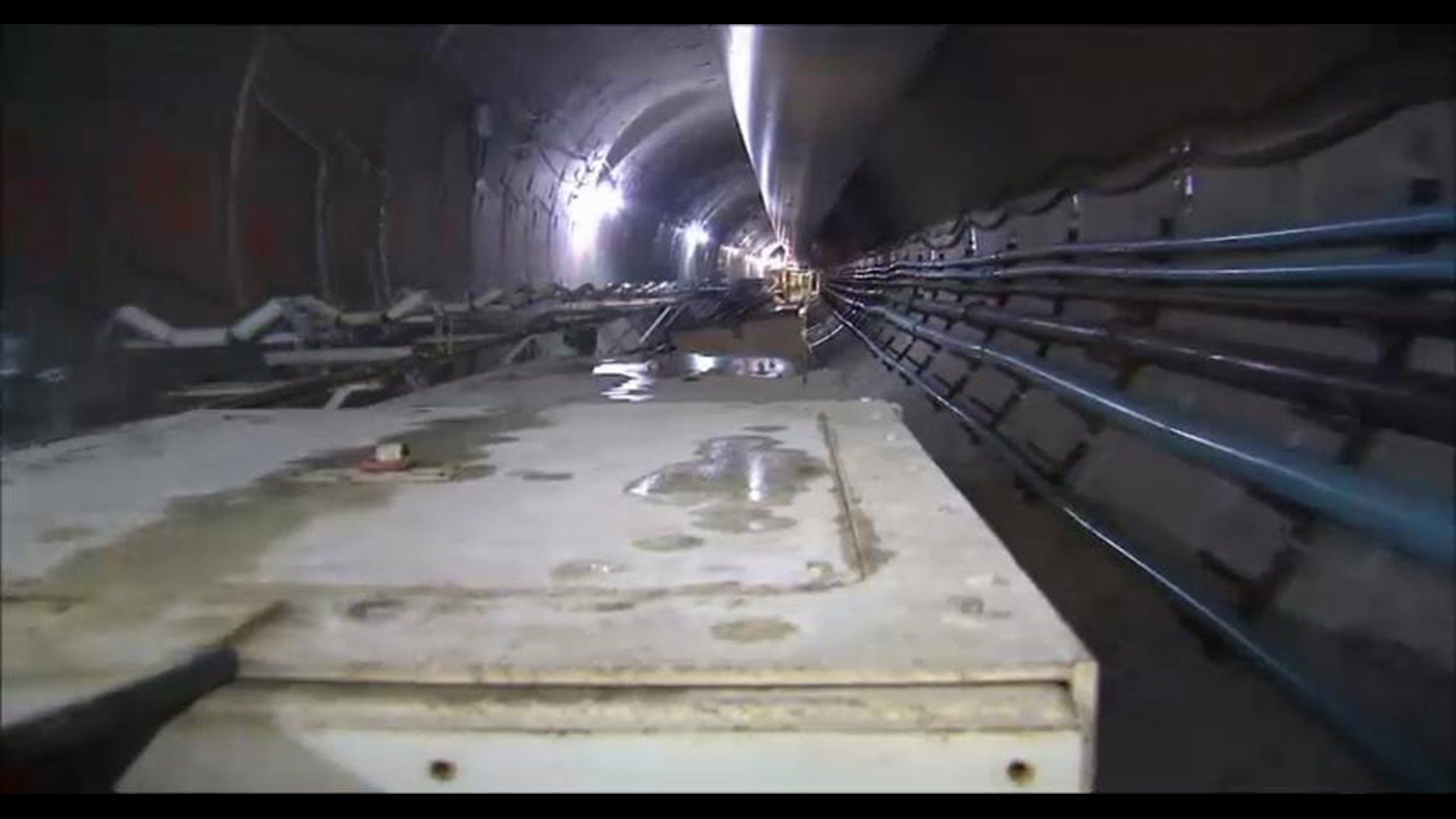At nearly $350 million, a project to bore a tunnel under the City of Columbus is the most expensive in the city’s history.
When completed, the 4-mile tunnel should fix a major environmental problem in Downtown Columbus – storm sewage overflow into the Scioto River.
Since 2010, the 95-ton blade attached to a cutting machine has snaked its way more 170 feet below the city’s surface.
It started at the city’s water treatment plant on Frank Road, bored below state Route 104, and will go under the Scioto River, north under Interstate 70 and will stop at the Arena District when the project is completed next year.
Below the city lies a world of towering limestone walls. A tiny train transports workers through a concrete tube made possible by one of the largest drilling machines in the world.
“This is really a one-of-a-kind machine,” said project manager David Day.
Engineers say the blade can grind through any rock formation in its path.
The machine was brought to Columbus from Germany to help solve a decades’ old problem – how to collect storm sewer runoff and prevent it from going into the Scioto River.
“You can store over 50 million gallons of flow in here,” Day said.
Until the project is completed, an estimated 1 billion gallons of partially treated sewage and industrial waste flow into the Scioto River each year, officials said.
City officials said that the problem occurs during heavy rains. The city’s combined sewer system gets overwhelmed with storm water. The pipes are unable to handle the flow and sewage and it is sent into the river.
“When it’s complete, it will take all the overflows from the combined sewers from the downtown area and transport them for treatment rather than go into the river,” Day said.
Experts said that would not be possible without the tunnel.
In order for this tunnel-boring machine to work, it has to know where it is going. Like your car, it needs GPS, only this one is laser-guided. It needs that so it makes turns and there are more than dozen in this 4-mile long project.
By drilling standards, the drill is on a sprinter’s pace.
“We’re averaging 40 to 50 feet a day,” Day said.
The $341 million self-cleaning tunnel is the most expensive in the city’s history, and experts said it is as close to a perfect solution as they can get to collect the storm sewer overflow.
“It will not eliminate all overflow events like a monsoon, but it will take care of all of the flows in the downtown area,” Day said.
The project is not without controversy.
In order to pay for it, the city needed rate payers to foot the entire bill.
Beginning in 2001, Columbus water and sewer rates went up – at times, double-digit increases – which have then decreased over time.
When the project is completed next year, the city says the state-of-the-art sewer project will correct constant pollution problems and alleviate the stench that often permeates downtown.
The tunnel is part of a $2.5 billion wet-weather management plan paid for by rate payers.
Watch 10TV News and refresh 10TV.com for more information.
95-Ton Cutting Machine Drills 4-Mile Tunnel Under Columbus
More than 150 feet below the city is a place few have seen. 10TV’s Kevin Landers takes you inside the tunnel – the city’s most expensive project in history.

